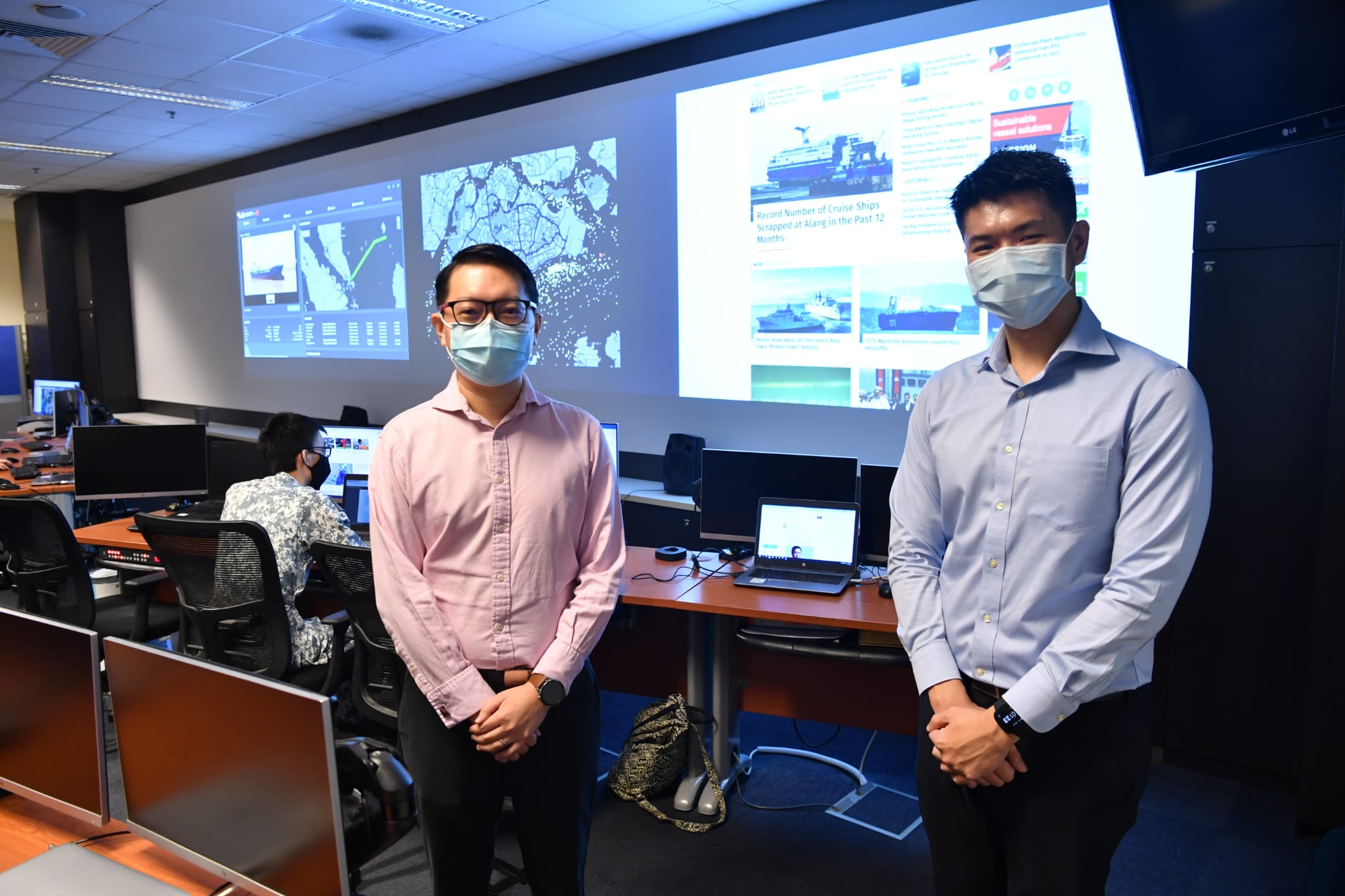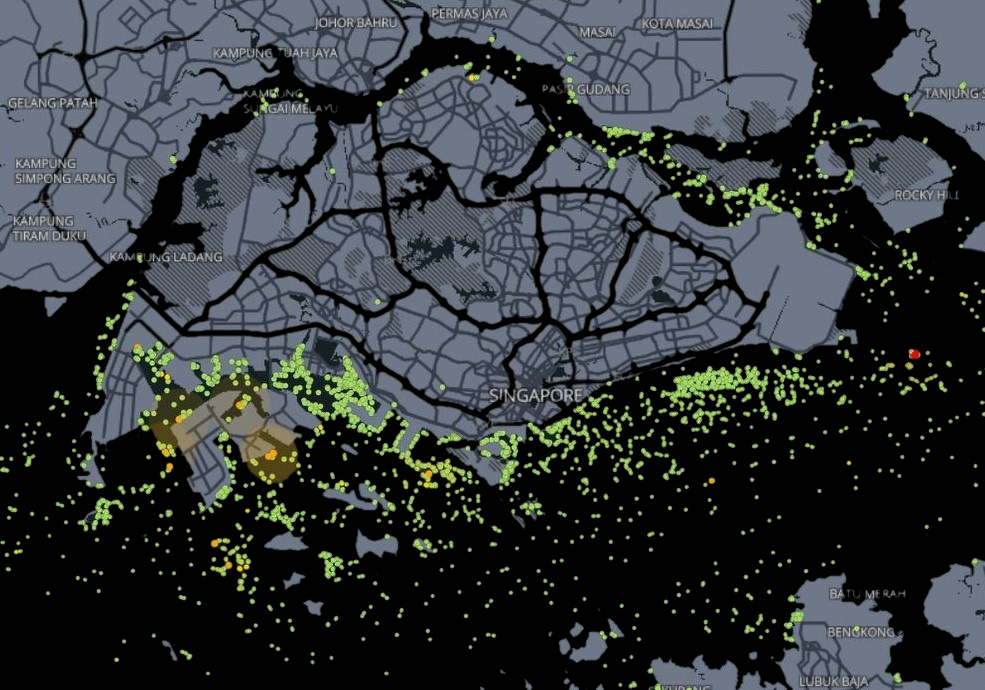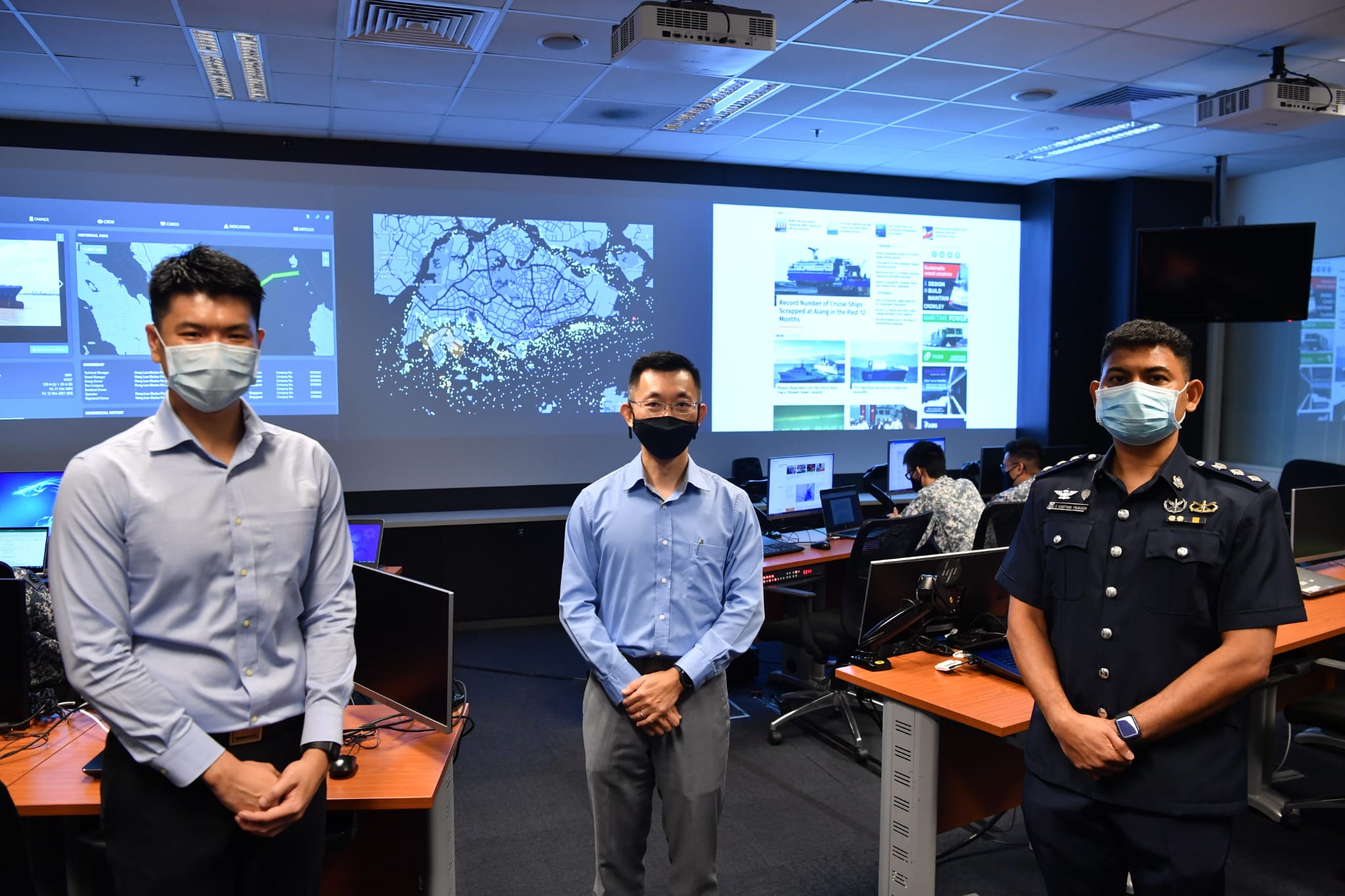15 Nov 2021
When the going gets tough, just get smarter!
With Singapore’s waters being among the busiest in the world, our engineers knew that advanced technologies had to be leveraged for maritime security agencies to sense-make large volumes of data and respond to maritime threats effectively.
Harnessing artificial intelligence (AI) and data analytics, a team of multidisciplinary DSTA engineers worked with DSO National Laboratories and developed the next-generation sense-making system from scratch for the Singapore Maritime Crisis Centre (SMCC). The highly complex system, which employs big data and analytics for real-time threat evaluation of vessels coming to Singapore, was unveiled at the biennial Exercise Highcrest held from 8 to 12 November 2021, which marked a decade of SMCC operations.

Head (C3 AI) Leslie Lim (left) and Programme Manager (Systems Engineering and C3 Centre) Tan Yangzhi at the SMCC Watch floor.
Established in 2011, the SMCC is a Whole-of-Government set-up staffed by various agencies such as the RSN, the Singapore Police Force, the Maritime and Port Authority of Singapore, the Immigration and Checkpoints Authority, Singapore Customs and the Singapore Civil Defence Force.
DSTA is the overall programme manager and developer of the next generation sense-making system, which is able to fuse data from over 100 sources in real time. The system also incorporates a range of machine learning and rule-based techniques that allow it to identify anomalous vessel behaviours automatically, such as deviations from typical shipping lanes. Given the multiple data sources, the team designed the system to perform trend and pattern analysis through data visualisation tools like network graphs, to help analysts better study and scrutinise links in closer detail. With this system, the SMCC and other national maritime security agencies can share an enhanced picture of the overall situation on the high seas for greater common situational awareness.
Previously, after SMCC operators keyed data into an earlier iteration of the system, analysis of the large volume of information would be screened manually, which was a time-consuming process. The new system consolidates data and flags out deviations to operators automatically in real time, thereby reducing the time required to assess maritime threats from hours to just minutes.

The interface of the next-generation sense-making system.
Head (C3 AI) Leslie Lim was part of the team that built the in-house sense-making system by tapping DSTA’s expertise in Command, Control and Communications (C3) system development and data analytics. He shared that in the maritime sector, a vessel has to send information about its voyage, crew and cargo separately to different agencies, and any human errors such as spelling mistakes and incomplete information when submitting data can make it difficult to link records together.
“Using a process known as Entity Resolution, which is a technique that creates systematic linkages between disparate data records, data from multiple commercial and public proprietary sources are fused into a single record, so that subsequent data analytics can be much more effective,” Leslie said, explaining that the team overcame this challenge by tapping technology.

From left: Programme Manager (Systems Engineering and C3 Centre) Tan Yangzhi, Director of SMCC’s National Maritime Sense-making Group COL Desmond Low (RSN), Deputy Director of SMCC’s National Maritime Operations Group SUPT S Kanthan Prakash (SPF).
Credit: MINDEF
Programme Manager (Systems Engineering and C3 Centre) Tan Yangzhi, who led the ops-tech coordination in the system’s development, added that beyond technology, teamwork was another key factor that contributed to the success.
“Defence engineers have to work very closely with SMCC operators as well as personnel from various agencies to understand the complex maritime landscape and operational requirements to design and develop an effective system. We had to put ourselves in their shoes to understand and gather their perspectives, so that we can refine the accuracy of our algorithms continuously and create more indicators in the system to identify potential threats. This was made possible only due to our strong ops-tech partnership and multi-agency collaboration,” he said.
Even as the next-generation sense-making system is being operationalised, our engineers will continue to work closely with their counterparts from the other agencies to continue enhancing its capabilities.
